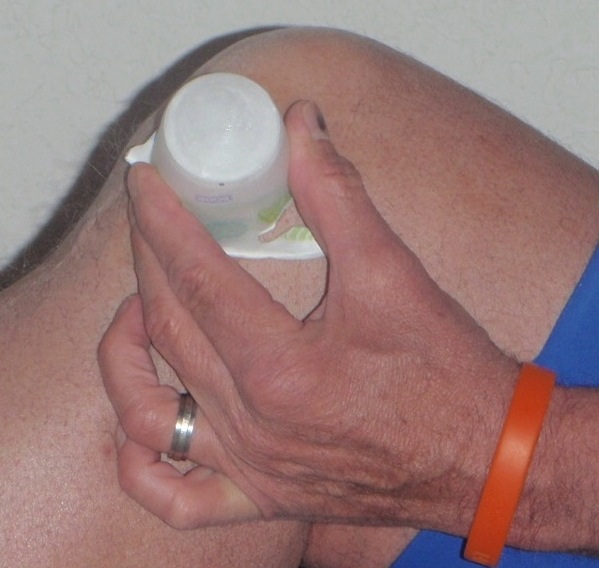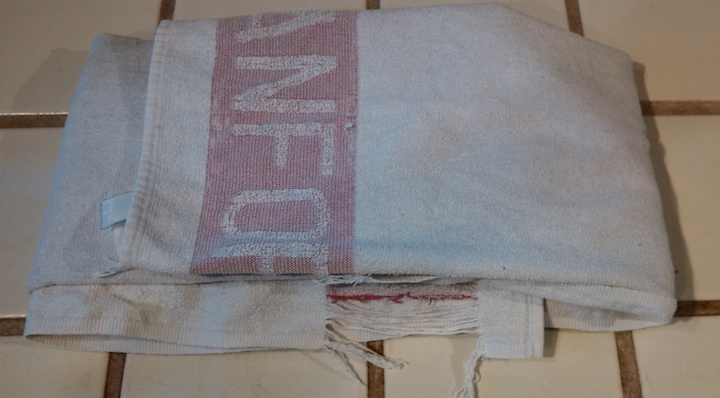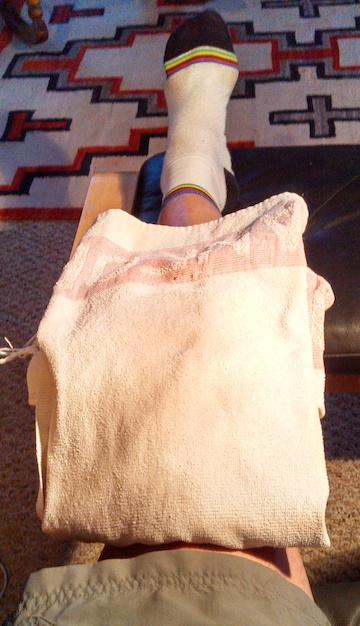 |
 |
 |
 |
 |
 |
 |
 |

|
 |
|
| ||||||
|
Icing for Cycling Icing a cycling injury may be appropriate. Here are the pros and cons and how to do it. by Coach John Hughes John Hughes is the author of Anti-Aging: 12 Ways to You Can Slow the Aging Process and of the book Distance Cycling. He has written 40 articles on training, nutrition, psychology and medical issues for RoadBikeRider.com. More about Coach Hughes. Icing is one way of relieving muscle soreness and inflammation. If you have tight sore muscles then stretching and massage will help. So will active recovery: a slow, very easy ride or walk. If you have inflammation, particularly around a joint, then icing may be appropriate Inflammation is the body’s way of protecting itself. Further, inflammation actually helps to heal damaged muscle tissue! However, inflammation may also interfere with function, making it harder to ride. If maintaining function is important, for example right before or during an important event, then icing may be right. Icing is one part of RICE, the recommended treatment for an injury:
Remembering that inflammation promotes healing, if you decide to ice you should also rest if possible to avoid further damage. Inflammation is the body’s natural response to overuse and injury. The body is trying to protect itself by removing harmful stimuli, including damaged cells, irritating substances, or pathogens and to begin the healing process. The harmful stimuli are removed by the lymphatic system. Blood has a pump, your heart, which moves blood through your body. Unlike blood, lymphatic fluid doesn’t have a pump, but moves as a result of muscle action. That’s why massage and active recovery are particularly important. Inflammation is the result of increased blood flow to the affected body part and increased movement of blood from the blood vessels to the interstitial spaces between cells. This causes the swelling. Icing reduces the blood flow and thus reduces inflammation. However, if you ice too long, your body will send more blood to the region to prevent freezing increasing swelling! If you decide to ice, there are two different methods:
Focal point icing Ice pack
1. Take four trays of ice and dump them on a towel.
2. Fold each long side of the towel over the top of the ice.
3. Then fold each end of the towel over the top of the ice. The result is an ice pack with just one layer of towel on one side.
4. Pour about a cup of water over the side with one layer of towel. The water transmits the cold faster to the affected area.
5. Apply the wet side of the towel to the inflamed area.
More Information Get more information on nine different recovery techniques including post-ride nutrition, stretching, self-massage and icing in my 16-page eArticle Optimal Recovery for Improved Performance, which is available for just $4.99 from RoadBikeRider.com The article is illustrated with 14 photos. Other articles by Coach Hughes
| ||||||





